Thingiverse

X Kreuzungsmodell 1 für Mobiltätstraining für Blinde und Sehbehinderte / X Crossing model for mobility training by Finder-2018
by Thingiverse
Last crawled date: 3 years, 1 month ago
Ich glaube fast jeder der Mobilität für Blinde oder Sehbehinderte unterrichtet, kennt das Problem: Wie erkläre ich meinen Klienten / Schüler am besten an welchen Stellen wir heute in der Stunde die X Kreuzung überqueren... da kann ein Modell schon einmal sehr hilfreich sein. Die Grundidee dieses Modells geht auf das Pappmodell von Frau Sylvia P. aus Marburg zurück.
Die weißen Knöpfe haben einen Magneten drin - mit Ihnen kann man die späteren Überquerungsstellen markieren. In dem Modell selber sind in den "vier Armen" der Kreuzung große Magnete eingedruckt - auf diese kann man dann später die "Knöpfe" stellen. Ein kleiner Magnet wird in der Mitte eingedruckt - er dient später dazu, dass das Modell auch der Negativeform hält.Die Knöpfe sind ein Remix von bmoles https://www.thingiverse.com/thing:4485026.
Für die Umsetzung dieses Modell benötigt man außer PLA und z.B.: TPU oder wie in meinem Fall Corix 3D Soft PLA. Weiter benötigt man noch drei Magnete d= 8mm h= 3 mm (1 St. für die Mitte im Modell und zwei für die weißen Knöpfe) und 4x Magnete d= 15mm h= 3mm - das waren die Magneten die ich noch in der Bastelkiste hatte...
Ich plane noch eine negative Form für die X Kreuzung zu drucken, in dieses Modell später passt. Die Konstruktion werde auch auch hier wieder hoch zuladen. Ok. es gibt noch zwei andere Formen von Kreuzungen: die Y-Kreuzung und die T-Kreuzung - mit irgendeiner Kreuzung muss man ja anfangen...
So ein Modell aus PLA ist abwaschbar und kann deshalb auch gut im Regen eingesetzt werden... das Pappmodell dagegen weicht leider mit der Zeit auf. Ich denke nicht das Sie dieses Modell in der Sonne grillen wollen? - das kommt bekanntlich bei PLA wegen der der niedrigen Verglasungstemperatur und der UV Strahlung nicht so gut...
Die Größe mit 13x13 cm wurde deshalb gewählt, damit das Modell auch auf kleinen 3D Druckern wie dem Finder gut zu Drucken ist.
Wichtig: Bevor sie das Modell bei ihren Klienten einsetzen, fragen sie ihn bitte ob er Probleme mit Magneten hat - z.B.: einen Herzschrittmacher!!!
This is an automatic translation:
I think almost everyone who teaches mobility for the blind or visually impaired knows the problem: How do I best explain to my clients at which points we cross the X intersection during the lesson ... a model can be very helpful. The basic idea of this model goes back to the cardboard model of Mrs. Sylvia P. from Marburg.
The white buttons have a magnet inside - you can use them to mark the later crossing points. In the model itself, large magnets are imprinted in the "four arms" of the intersection - the "buttons" can then be placed on these later. A small magnet is imprinted in the middle - it will later be used to ensure that the model also holds the negative form. The buttons are a remix by bmoles https://www.thingiverse.com/thing:4485026.
For the implementation of this model you need besides PLA and e.g. TPU or as in my case Corix 3D Soft PLA three magnets d = 8mm h = 3 mm and 4x magnets d = 15mm h = 3mm - those were the magnets that I still used the craft box had ...
I am planning to print a negative shape for the X intersection, which will fit into this model later. The construction will also be uploaded here again. OK. There are two other forms of intersection: the Y-intersection and the T-intersection - you have to start with any intersection ...
Such a model made of PLA is washable and can therefore also be used well in the rain ... the cardboard model, on the other hand, unfortunately softens over time. I don't think you want to grill this model in the sun? - As is well known, this does not work so well with PLA because of the low glazing temperature and the UV radiation ...
The size of 13x13 cm was chosen so that the model can also be easily printed on small 3D printers such as the Finder.
Important: Before you use the model with your client, please ask him if he has problems with magnets - e.g. a pacemaker !!!
Die weißen Knöpfe haben einen Magneten drin - mit Ihnen kann man die späteren Überquerungsstellen markieren. In dem Modell selber sind in den "vier Armen" der Kreuzung große Magnete eingedruckt - auf diese kann man dann später die "Knöpfe" stellen. Ein kleiner Magnet wird in der Mitte eingedruckt - er dient später dazu, dass das Modell auch der Negativeform hält.Die Knöpfe sind ein Remix von bmoles https://www.thingiverse.com/thing:4485026.
Für die Umsetzung dieses Modell benötigt man außer PLA und z.B.: TPU oder wie in meinem Fall Corix 3D Soft PLA. Weiter benötigt man noch drei Magnete d= 8mm h= 3 mm (1 St. für die Mitte im Modell und zwei für die weißen Knöpfe) und 4x Magnete d= 15mm h= 3mm - das waren die Magneten die ich noch in der Bastelkiste hatte...
Ich plane noch eine negative Form für die X Kreuzung zu drucken, in dieses Modell später passt. Die Konstruktion werde auch auch hier wieder hoch zuladen. Ok. es gibt noch zwei andere Formen von Kreuzungen: die Y-Kreuzung und die T-Kreuzung - mit irgendeiner Kreuzung muss man ja anfangen...
So ein Modell aus PLA ist abwaschbar und kann deshalb auch gut im Regen eingesetzt werden... das Pappmodell dagegen weicht leider mit der Zeit auf. Ich denke nicht das Sie dieses Modell in der Sonne grillen wollen? - das kommt bekanntlich bei PLA wegen der der niedrigen Verglasungstemperatur und der UV Strahlung nicht so gut...
Die Größe mit 13x13 cm wurde deshalb gewählt, damit das Modell auch auf kleinen 3D Druckern wie dem Finder gut zu Drucken ist.
Wichtig: Bevor sie das Modell bei ihren Klienten einsetzen, fragen sie ihn bitte ob er Probleme mit Magneten hat - z.B.: einen Herzschrittmacher!!!
This is an automatic translation:
I think almost everyone who teaches mobility for the blind or visually impaired knows the problem: How do I best explain to my clients at which points we cross the X intersection during the lesson ... a model can be very helpful. The basic idea of this model goes back to the cardboard model of Mrs. Sylvia P. from Marburg.
The white buttons have a magnet inside - you can use them to mark the later crossing points. In the model itself, large magnets are imprinted in the "four arms" of the intersection - the "buttons" can then be placed on these later. A small magnet is imprinted in the middle - it will later be used to ensure that the model also holds the negative form. The buttons are a remix by bmoles https://www.thingiverse.com/thing:4485026.
For the implementation of this model you need besides PLA and e.g. TPU or as in my case Corix 3D Soft PLA three magnets d = 8mm h = 3 mm and 4x magnets d = 15mm h = 3mm - those were the magnets that I still used the craft box had ...
I am planning to print a negative shape for the X intersection, which will fit into this model later. The construction will also be uploaded here again. OK. There are two other forms of intersection: the Y-intersection and the T-intersection - you have to start with any intersection ...
Such a model made of PLA is washable and can therefore also be used well in the rain ... the cardboard model, on the other hand, unfortunately softens over time. I don't think you want to grill this model in the sun? - As is well known, this does not work so well with PLA because of the low glazing temperature and the UV radiation ...
The size of 13x13 cm was chosen so that the model can also be easily printed on small 3D printers such as the Finder.
Important: Before you use the model with your client, please ask him if he has problems with magnets - e.g. a pacemaker !!!
Similar models
thingiverse
free

X Kreuzungsmodell für Mobiltätstraining für Blinde und Sehbehinderte 2 / X Crossing model for mobility training by Finder-2018
... before you use the model with your clients / students, please ask them if they have problems with magnets - e.g. a pacemaker !!!
thingiverse
free
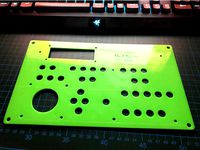
MaXYpulti Frontplatte by Misterfloppy
...splay und cnc handwheel sollte jetzt auch passen.
ebenfalls wurden die löcher für die einzelnen tasten ein wenig vergrößertjetzt.
thingiverse
free

Auf Türbänder steckbare Sicherung/Führung für Glasschiebetür by handymax
...e klemmung nicht ausreichend, kann man noch einen neodym-magneten mit 8x3 mm einsetzen.
passende magnete: https://amzn.to/2dpy5xa
thingiverse
free
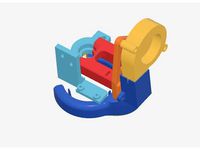
Sparkcube (und andere) Druckkopf mit Beleuchtung für E3D V6 by Rolfiklein
...n usern habe ich den kühlkanal jetzt auch noch mit schräg nach innen gerichteten blaslöchern geändert. ist die datei kanalspk.stl
thingiverse
free
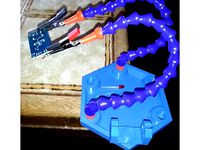
Helfende Hand Basis (Helping Hand Base) by Dr_Peacock
... bilder.
die base ist 12cm von seite zu seite.
kritik, lob oder verbesserungsvorschläge könnt ihr gerne als comment hinterlassen.
thingiverse
free

Legenden von Andor - Einsatz der Sternenschild by Moly2201
...nn.
als kleber habe ich ein kunststoffkleber auf n-butylacetat-basis verwendet, hält bombenfest und duftet beim kleben auch gut.
thingiverse
free

Ender 3 Spulenhalterung by MachWas
...rung empfohlen wie solche hier auf thingiverse zu finden sind..
dies ist ein design von und für: http://www.machwas-makerspace.ch
thingiverse
free

Senseo Schwimmer by ostwestfale2010
...nd mit dem senseo tankclip fixieren.(https://www.thingiverse.com/thing:1196269).
erfolgreich getestet mit einer senseo quadrante.
thingiverse
free

5€ Münzen Box by Mysterious_9
...r whal hinten in der box montiert hat.
die box hat auf beiden seiten löcher, damit man das kabel für das licht hineinführen kann.
thingiverse
free

Herd Knöpfe für Kinderküche / Matschküche by Tine77
...ich einen passenden holzwürfel geklebt, um die drehknöpfe dann von hinten an einem brett befestigen zu können.
gedruckt mit pla.
Sehbehinderte
thingiverse
free

Buchlunge by SZS
...bei spinnen vorkommt. das modell wurde erstellt, um eine sehbehinderte studentin im bereich der zoologie zu unterstützen. die lunge...
thingiverse
free

X Kreuzungsmodell für Mobiltätstraining für Blinde und Sehbehinderte 2 / X Crossing model for mobility training by Finder-2018
... before you use the model with your clients / students, please ask them if they have problems with magnets - e.g. a pacemaker !!!
Finder
turbosquid
$80

path finder
... available on turbo squid, the world's leading provider of digital 3d models for visualization, films, television, and games.
turbosquid
$26

Radio direction finder A
...ty free 3d model radio direction finder a for download as fbx on turbosquid: 3d models for games, architecture, videos. (1212490)
turbosquid
$13

Oppo Finder X907
... available on turbo squid, the world's leading provider of digital 3d models for visualization, films, television, and games.
turbosquid
$5
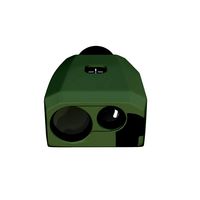
Pocket Leser Renge Finder
...nge finder for download as 3ds, lwo, obj, fbx, blend, and dae on turbosquid: 3d models for games, architecture, videos. (1384961)
3ddd
$1

Писсуар Laufen
...писсуар laufen 3ddd laufen , ilbagnoalessi one , писсуар http://www.laufen.ru/ru/products/product-finderписсуары/840971 писсуар...
archive3d
free

Detector 3D Model
...detector 3d model archive3d detector metal detector metal finder radio-metal locator detector metal n250314 - 3d model (*.gsm+*.3ds)...
3ddd
$1

Унитаз подвесной 820681
...унитаз подвесной 820681 3ddd 820681 , подвесной , унитаз http://www.ru.laufen.com/wps/wcm/connect/laufen_ru/ru_ru/products/product+findermodel/?&view;=t&md;=820681 ...
3d_export
$28

Laserliner LRMPocket 40 3D Model
...3dexport laserliner lrm 40 electronics laserrange-master pocket laser distance finder measure laserliner lrmpocket 40 3d model mega3d 51533...
3ddd
$1

Раковина Laufen
...раковина laufen 3ddd laufen , ilbagnoalessi one , умывальник http://www.laufen.ru/ru/products/product-finder%d1%80%d0%b0%d0%ba%d0%be%d0%b2%d0%b8%d0%bd%d1%8b/813971 умывальник...
3ddd
$1

Occhio floor luminaire sento led lettura 2014
...luminaire sento led lettura 2014 3ddd occhio , lettura http://www.occhio.de/en/sento/sento-led-lettura?back=products/finder21&finder;=21 amp body 125 or 160 cm height, inclinable up...
Blinde
archibase_planet
free
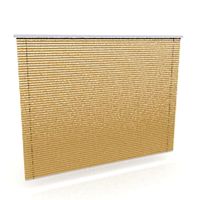
Blind
...blind
archibase planet
blind venetian blind jalousie
blind - 3d model for interior 3d visualization.
archibase_planet
free
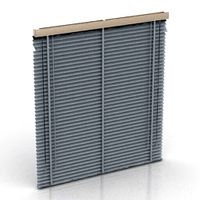
Blinds
...blinds
archibase planet
blinds blind jalousie
blinds n270313 - 3d model (*.gsm+*.3ds) for interior 3d visualization.
archibase_planet
free
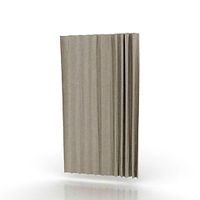
Blind
...blind
archibase planet
blind venetian blind jalousie
blind n031007 - 3d model (*.gsm+*.3ds) for interior 3d visualization.
archibase_planet
free
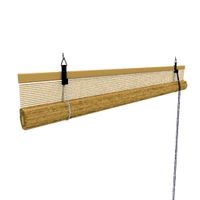
Blind
...blind
archibase planet
blind jalousie
blind - 3d model for interior 3d visualization.
archibase_planet
free
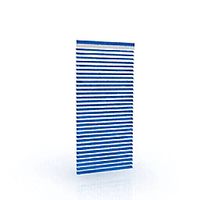
Blind
...blind
archibase planet
blind sunblind jalousie
blind - 3d model for interior 3d visualization.
archibase_planet
free

Blind
...blind
archibase planet
blind curtain
blind - 3d model (*.gsm+*.3ds) for interior 3d visualization.
archibase_planet
free
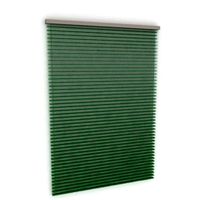
Blind
...blind
archibase planet
blind jalousie
venetian blind 1- 3d model for interior 3d visualization.
archibase_planet
free
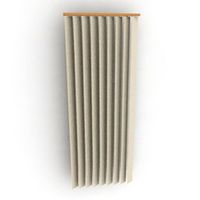
Blind
...blind
archibase planet
venetian blind jalousie
venetian blind 2 - 3d model for interior 3d visualization.
3d_ocean
$9

Blinds
...blinds
3docean
blinds curtain decor decoration drapes flat furniture home house interior jalousie
?urtains and blinds
archibase_planet
free
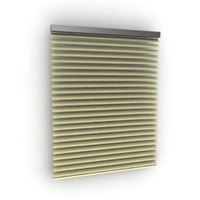
Blind
...blind
archibase planet
venetian blind jalousie
so blinds - 3d model (*.gsm+*.3ds) for interior 3d visualization.
Und
turbosquid
free

Eisbaer und Seehund
... available on turbo squid, the world's leading provider of digital 3d models for visualization, films, television, and games.
turbosquid
$19

Hookl und Stool Triangle
...el hookl und stool triangle for download as max, obj, and fbx on turbosquid: 3d models for games, architecture, videos. (1281632)
turbosquid
$19

Hookl und Stool Tisa
... model hookl und stool tisa for download as max, obj, and fbx on turbosquid: 3d models for games, architecture, videos. (1281630)
turbosquid
$19

Hookl und Stool Lipa
... model hookl und stool lipa for download as max, obj, and fbx on turbosquid: 3d models for games, architecture, videos. (1281629)
turbosquid
$19

Hookl und Stool Lasta
...model hookl und stool lasta for download as max, obj, and fbx on turbosquid: 3d models for games, architecture, videos. (1281626)
turbosquid
$39

Lund und Paarman Lobster Chair
... available on turbo squid, the world's leading provider of digital 3d models for visualization, films, television, and games.
turbosquid
$48

Blohm Und Voss BV 138M Hydroplane
...und voss bv 138m hydroplane for download as obj, c4d, and fbx on turbosquid: 3d models for games, architecture, videos. (1477420)
turbosquid
$19
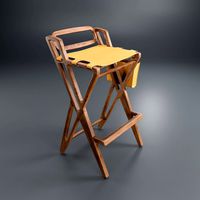
Hookl und Stool Triangle Bar stool
...nd stool triangle bar stool for download as max, obj, and fbx on turbosquid: 3d models for games, architecture, videos. (1281633)
turbosquid
$19

LayAir 02 Low Armchair by Hookl und Stool
...layair 02 low armchair by hookl und stool for download as max on turbosquid: 3d models for games, architecture, videos. (1242040)
3d_export
$28

three soft chairs in different high quality textures and colors decor und furniture
...lors, with wooden legs and a metal frame, decor und furniture. v-ray render in formats: *.fbx, *.3ds, *.obj, *.wrl, *.max, *.dwg.
Training
archibase_planet
free

Train
...train
archibase planet
train fast train high-speed train
train speed n221014 - 3d model (*.3ds) for exterior 3d visualization.
3d_ocean
$29

Train
...train
3docean
locomotive train
hello i havolk train
3d_export
$5

train
...train
3dexport
train
3d_export
$5

train
...train
3dexport
train
3d_export
$10

train
...train
3dexport
a lowpoly train...
3ddd
$1

train
...train
3ddd
паровоз
train old
3d_ocean
$12

Train
...train
3docean
child children model old retro toy train wood wooden
old wooden children’s train.
3d_ocean
$5
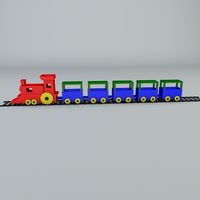
toy train
...toy train
3docean
kids toy train
3d model toy train
turbosquid
$55
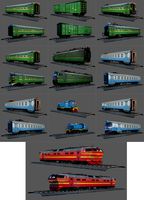
train
...n
turbosquid
royalty free 3d model train for download as max on turbosquid: 3d models for games, architecture, videos. (1477635)
turbosquid
$50

train
...n
turbosquid
royalty free 3d model train for download as max on turbosquid: 3d models for games, architecture, videos. (1419091)
Mobility
3ddd
$1
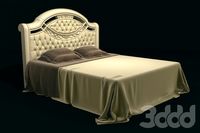
Mobil Piu
...mobil piu
3ddd
mobil piu , капитоне
кровать mobil piu
turbosquid
$10
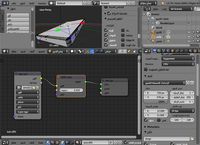
mobile
...urbosquid
royalty free 3d model mobile for download as blend on turbosquid: 3d models for games, architecture, videos. (1385101)
turbosquid
$1

Mobile
...uid
royalty free 3d model mobile for download as fbx and obj on turbosquid: 3d models for games, architecture, videos. (1607690)
3d_export
$5
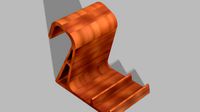
Mobile Holder
...mobile holder
3dexport
new mobile holder
turbosquid
$55

Mobile
... available on turbo squid, the world's leading provider of digital 3d models for visualization, films, television, and games.
turbosquid
$20
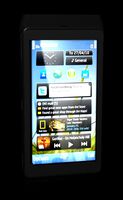
Mobile
... available on turbo squid, the world's leading provider of digital 3d models for visualization, films, television, and games.
turbosquid
$20

mobile
... available on turbo squid, the world's leading provider of digital 3d models for visualization, films, television, and games.
turbosquid
$10

MOBILE
... available on turbo squid, the world's leading provider of digital 3d models for visualization, films, television, and games.
turbosquid
$9

mobile
... available on turbo squid, the world's leading provider of digital 3d models for visualization, films, television, and games.
turbosquid
$1

Mobile
... available on turbo squid, the world's leading provider of digital 3d models for visualization, films, television, and games.
Für
turbosquid
free
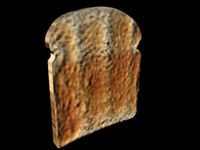
Brot für die Welt
... available on turbo squid, the world's leading provider of digital 3d models for visualization, films, television, and games.
thingiverse
free
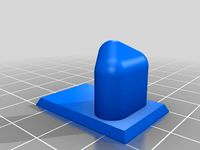
Brillenhalter V3 für 1 Brille für Doppelklebeband by piepsvo
...brillenhalter v3 für 1 brille für doppelklebeband by piepsvo
thingiverse
brillenhalter v3 für 1 brille für doppelklebeband
thingiverse
free

Halterung für 3DConnexion SpaceNavigator für Notebooks by herbert_b1
...ung für 3dconnexion spacenavigator für notebooks by herbert_b1
thingiverse
support for 3dconnexion spacenavigator for notebooks
thingiverse
free

Deckplatte für Playmobil Möbel (Schrank für Herd etc) by charly52
...kplatte für playmobil möbel (schrank für herd etc) by charly52
thingiverse
deckplatte für playmobil möbel (schrank für herd etc)
thingiverse
free

Haken für Kederschiene 7mm für Dtbd-Dachzelt by Paku_ia
...dtbd-dachzelt by paku_ia
thingiverse
haken für ddbd-dachzelt. zur montage wir die haken einfach in die kederleiste eingeschoben.
thingiverse
free

Öse für Kederschiene 7mm für Dtbd-Dachzelt by Paku_ia
...ia
thingiverse
besfestigungsöse für ddbd-dachzelt. zur montage wir die befestigungsöse einefach in die kederleiste eingeschoben.
thingiverse
free

Case für REPRAP_DISCOUNT_FULL_GRAPHIC_SMART_CONTROLLER by Rolfiklein
..._full_graphic_smart_controller by rolfiklein
thingiverse
gehäuse für das weit verbreitete grafik display mit schalter für licht.
thingiverse
free

Haken für Dusche by Pascal_1966
...haken für dusche by pascal_1966
thingiverse
haken für dusche
thingiverse
free

Printhalterung für Schaltschrank by nikibalboa
...printhalterung für schaltschrank by nikibalboa
thingiverse
platinenaufnahme für schienenmontage
thingiverse
free

Adapter für Schläuche by jensatweb
...adapter für schläuche by jensatweb
thingiverse
adapter für poolschläuche
2018
turbosquid
$15

Human-2018
...turbosquid
royalty free 3d model human-2018 for download as on turbosquid: 3d models for games, architecture, videos. (1175109)
3d_export
$20

dodgechallenger srt 2018
...dodgechallenger srt 2018
3dexport
dodge_challenger srt 2018
3d_export
$20
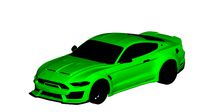
mustang shelby 2018
...mustang shelby 2018
3dexport
mustang shelby 2018
3d_export
$20

lexus ls 2018
...lexus ls 2018
3dexport
lexus ls 2018
turbosquid
$50

CBR250RR 2018
...quid
royalty free 3d model cbr250rr 2018 for download as max on turbosquid: 3d models for games, architecture, videos. (1631746)
turbosquid
$19

Bitcoin 2018
...squid
royalty free 3d model bitcoin 2018 for download as obj on turbosquid: 3d models for games, architecture, videos. (1266554)
turbosquid
$3
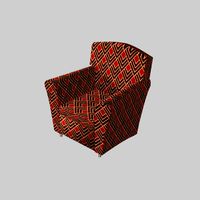
chair001A-2018
...uid
royalty free 3d model chair001a-2018 for download as max on turbosquid: 3d models for games, architecture, videos. (1663170)
turbosquid
$25

Pumpkin 2018
... 3d model pumpkin 2018 for download as max, lwo, obj, and c4d on turbosquid: 3d models for games, architecture, videos. (1336084)
3d_export
$20
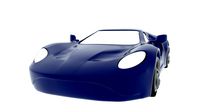
gt 2018
...gt 2018
3dexport
car model with rig for animation
turbosquid
$39
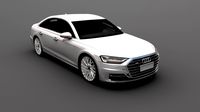
A8 2018
...a8 2018 for download as 3ds, obj, wrl, c4d, fbx, dae, and stl on turbosquid: 3d models for games, architecture, videos. (1345349)
Crossing
3d_export
$5

Cross
...cross
3dexport
cross
archibase_planet
free

Cross
...cross
archibase planet
cross
church sanctuary cross - 3d model for interior 3d visualization.
3d_export
$25
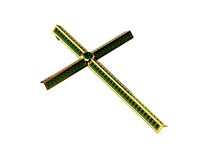
golden cross cross 3d gold cross
...golden cross cross 3d gold cross
3dexport
archibase_planet
free

Cross
...cross
archibase planet
cross crucifix rood
cross n220513 - 3d model (*.3ds) for interior 3d visualization.
3d_export
$5

cross
...cross
3dexport
body cross jewelry 70мм * 50мм
design_connected
$16

Cross
...cross
designconnected
two.six cross computer generated 3d model. designed by ferreira, domingos.
turbosquid
$1

Cross
...cross
turbosquid
free 3d model cross for download as blend on turbosquid: 3d models for games, architecture, videos. (1319421)
turbosquid
$15

Cross
...s
turbosquid
royalty free 3d model cross for download as 3dm on turbosquid: 3d models for games, architecture, videos. (1203663)
turbosquid
$10

Cross
...s
turbosquid
royalty free 3d model cross for download as max on turbosquid: 3d models for games, architecture, videos. (1030743)
turbosquid
$3

Cross
...s
turbosquid
royalty free 3d model cross for download as max on turbosquid: 3d models for games, architecture, videos. (1555121)
1
turbosquid
$69

armchairs(1)(1)
... available on turbo squid, the world's leading provider of digital 3d models for visualization, films, television, and games.
turbosquid
$15
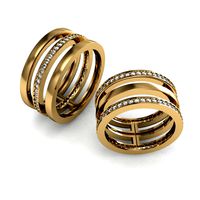
ring 1+1
... available on turbo squid, the world's leading provider of digital 3d models for visualization, films, television, and games.
turbosquid
$10
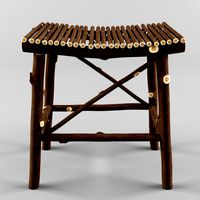
chair(1)(1)
... available on turbo squid, the world's leading provider of digital 3d models for visualization, films, television, and games.
turbosquid
$8

Chair(1)(1)
... available on turbo squid, the world's leading provider of digital 3d models for visualization, films, television, and games.
turbosquid
$2
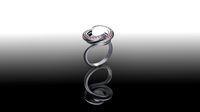
RING 1(1)
... available on turbo squid, the world's leading provider of digital 3d models for visualization, films, television, and games.
turbosquid
$1

Table 1(1)
... available on turbo squid, the world's leading provider of digital 3d models for visualization, films, television, and games.
turbosquid
$1

house 1(1)
... available on turbo squid, the world's leading provider of digital 3d models for visualization, films, television, and games.
turbosquid
$59
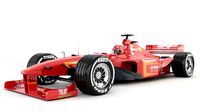
Formula 1(1)
...lty free 3d model formula 1 for download as max, fbx, and obj on turbosquid: 3d models for games, architecture, videos. (1567088)
design_connected
$11

No 1
...no 1
designconnected
sibast no 1 computer generated 3d model. designed by sibast, helge.
turbosquid
$2
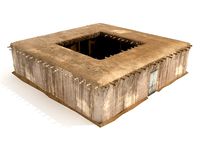
desert house(1)(1)
...3d model desert house(1)(1) for download as 3ds, max, and obj on turbosquid: 3d models for games, architecture, videos. (1055095)
